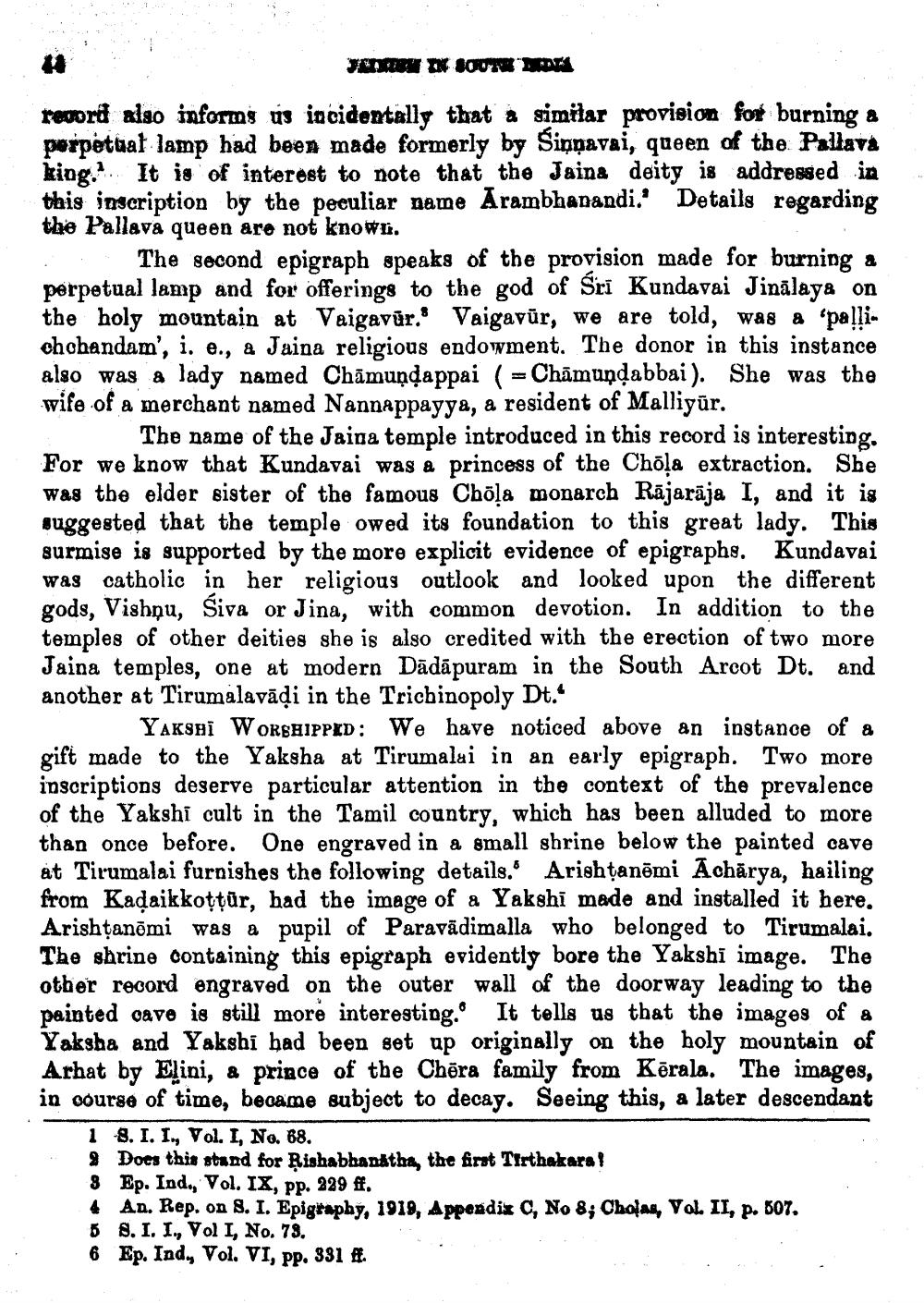________________
YARN XX SOON DIETA
record also informg us incidentally that a similar provision for burning a perpetuat lamp had been made formerly by Sinnavai, queen of the Pallava king. It is of interest to note that the Jaina deity is addressed in this inscription by the peculiar name Arambhanandi.' Details regarding the Pallava queen are not known. . The second epigraph speaks of the provision made for burning a perpetual lamp and for offerings to the god of Śrī Kundavai Jinālaya on the holy mountain at Vaigavũr. Vaigavūr, we are told, was a 'palli. chobandam', i. e., a Jaina religious endowment. The donor in this instance also was a lady named Chāmundappai ( = Chāmundabbai). She was the wife of a merchant named Nannappayya, a resident of Malliyūr.
The name of the Jaisa temple introduced in this record is interesting. For we know that Kundavai was a princess of the Chola extraction. She was the elder sister of the famous Chola monarch Rājarāja I, and it is suggested that the temple owed its foundation to this great lady. This surmise is supported by the more explicit evidence of epigraphs. Kundavai was catholic in her religious outlook and looked upon the different gods, Vishnu, Siva or Jina, with common devotion. In addition to the temples of other deities she is also credited with the erection of two more Jaina temples, one at modern Dādāpuram in the South Arcot Dt. and another at Tirumalavāļi in the Trichinopoly Dt.
Yakshi WORSHIPPED: We have noticed above an instance of a gift made to the Yaksha at Tirumalai in an early epigraph. Two more inscriptions deserve particular attention in the context of the prevalence of the Yakshi cult in the Tamil country, which has been alluded to more than once before. One engraved in a small shrine below the painted cave at Tirumalai furnishes the following details. Arishtanēmi Achārya, hailing from Kadaikkottur, had the image of a Yakshi made and installed it here. Arishțanāmi was a pupil of Paravādimalla who belonged to Tirumalai. The shrine containing this epigraph evidently bore the Yakshi image. The other record engraved on the outer wall of the doorway leading to the painted cave is still more interesting. It tells us that the images of a Yaksha and Yakshi had been set up originally on the holy mountain of Arhat by Elini, a prince of the Chēra family from Kērala. The images, in course of time, became subject to decay. Seeing this, a later descendant
1 8. I. I., Vol. I, No. 88. 9 Does this stund for Rishabhanátha, the first Tirthakara! 8 Ep. Ind., Vol. IX, pp. 329 ff. 4 An. Rep. on 8. I. Epigtaphy, 1919, Appendix C, No 8; Cholma, Vol. II, p. 807. 5 . I. I., Vol I, No. 73. 6 Ep. Ind, Vol. VI, pp. 331 #.




